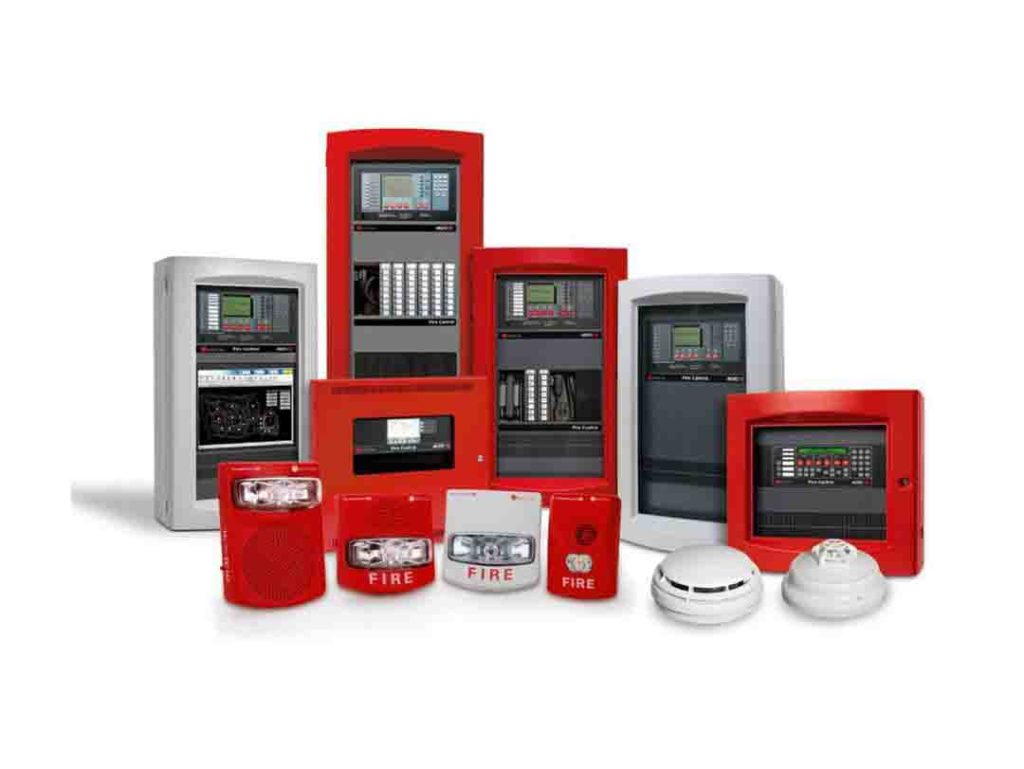Oil & Gas Process Line
The various and advanced industrial processes of today include many critical applications requiring stringent safety and environmental standards, in addition to demanding operational, reliability and efficiency criteria. As a result, industrial refrigeration and gas compression systems involve extensive and detailed specifications and standards. These projects also include exhaustive documentation and material requirements that must be met to ensure the quality and performance of the completed system.
York® Process Systems meets these demands with a well-proven track record of major installations worldwide, numbering more than 10,000 customized refrigeration and gas compression systems currently in operation.

Fire Fighting & Fire Detection
From computer rooms to fuel-pump islands, rare documents to manufacturing equipment, we use special hazard suppression systems to help protect high-risk, high-value environments and operations. If your organization includes sites where chemicals, flammables, processes, or equipment require specialized fire protection, and suppression solutions, talk to us
Commercial HVAC
Air conditioning, ventilation and heating systems are considered one of the main systems that are installed in buildings, as this requires great effort in the design and installation work, using machines manufactured by JOHNSON CONTROLS / YORK Company, where the trained engineering crews choose the appropriate machines for the project through licensed software from the Manufacture company, installation work is carried out according to international specifications in this field.
Corina has implemented a large number of projects in various types of buildings that included the installation of all types of central air conditioning systems, including Chilled water systems, VRF and Gas Systems


Industrial Refrigeration
We relentlessly pursue and achieve superior-quality products so you can confidently focus on your core businesses.
We offer a full line of equipment for food and beverage applications including low charge systems, rotary screw compressor packages, condensers, evaporators, heat exchangers, hygienic air handlers, controls, vessels and replacement parts for these products.
And we work with an elite set of sales and installation partners – our FRICK Factors – whose dedication to your absolute satisfaction contributes to our successful products, processes and services.
Energy
Gas Turbine Air Intake Cooling
Today, energy consumption is rising at an ever increasing rate. Surging populations and rapid urbanization, together with regulation to increase power plant efficiency and reduce carbon emissions mean
that the installed gas turbine power plant capacity is forecast to grow at an average Compound Annual Growth Rate (CAGR) of 7.5% across Asia
he alternatives: add new capacity or optimize output To meet this accelerated demand for electricity, the industry has turned to gas-turbine generators as a practical and efficient solution, recognizing gas turbine generators are the most environmentally-friendly way to generate electricity using a fossil fuel. One strategy to meet the growing demand for power is to add more gas turbine generators.
Adding new gas turbine capacity is capital intensive and can involve long permitting periods. An alternative strategy involves enhancing the output of existing generators. which allows existing site infrastructure, permits and grid connections to be utilized, maximizing the earning potential of these assets already in place

The cost-effective optimized solution: Gas Turbine Inlet Air Cooling Today, there are various ways to enhance the power output of gas turbines. The most cost-effective means is Gas Turbine Inlet Air Cooling (GTIAC). This technology can increase a gas turbine generator’s output to produce 30%+ more electricity at a fraction of the cost of a new gas turbine generator.
Experience: Johnson Controls chillers have been used in GTIAC applications for over 20 years Johnson Controls chillers were first deployed in a GTIAC application in the early 1990s in the USA.
Now, they can be found at the heart of inlet air cooling systems in power plants worldwide.
